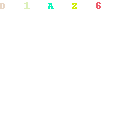by Thei Geurts
Over the past decades, many reforms in government have been aimed at increasing efficiency, effectiveness and value for money. Mostly these reforms are characterized by very little focus on the actual policy process and the way it affects the ability of policy makers to meet the needs of constituents in an increasingly complex, uncertain and unpredictable world. However, if this core process were to be modernized, it would yield considerable economic and social benefits, including enhanced productivity, openness, transparency and participation, as well as actionable and interoperable policy intelligence.
It is for this reason that I wrote the booklet “Public Policy Making: The 21st Century Perspective”. The booklet offers a concise overview and analysis of the nature of the public policy making system, its challenges and its decelerators for modernization. Based upon the analysis it addresses the opportunities for improvement in the primary policy making process as well as in the political and production dimension of the process. These improvements are based upon a collaborative approach to support multi stakeholder and participants involvement in the policy making system.
Public policy making can be characterized as a complex, dynamic, constantly evolving interactive and adaptive system. The process is stakeholder-driven. Actors are engaged in a goal-driven decision-making process and have a great deal of autonomy in the way they organize their work. The process is people driven, requires flexibility to respond ad hoc to events in a way that is appropriate to the specific known context at that moment in time. Higher demands from the system in which policy makers operate require a level of support that existing facilities cannot deliver. The current support infrastructure for policy makers is characterized on the one hand by isolation, fragmentation and non-responsiveness to change, and on the other hand by a lack of crucial support elements.
Policy makers need an infrastructure that seamlessly integrates with regulation-specific sources and services. This infrastructure should be designed for people and built for change. We have concluded that policy makers need an environment that brings together heterogeneous activities and functions in a meaningful actionable ensemble, organized around the case of a policy initiative and based on the making of decisions about a policy intention. The combination of case management, dynamic rules support and knowledge support instantly adds high-level value to the support provided to policy makers. It can be used to synthesize policy making and integrate it seamlessly with policy execution, thus creating a solid basis for the innovation of public sector services. And last but not least, policy makers can reap considerable economic and social benefits, including bringing government closer to citizens.
The booklet can be obtained at www.lulu.com. A free pdf-dowmload is also available.
The book’s author has also written a white paper entitled “The Policy maker Workplace”, which describes Be Informed’s solution for innovating the policy making process. This white paper can soon be downloaded free of charge at www.beinformed.com.
